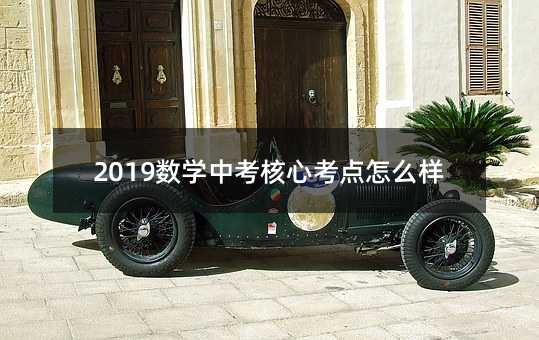中考英语从句精讲精练

篇1:中考英语从句精讲精练
1
宾语从句
一、定义
在句子中起宾语作用的从句叫做宾语从句。
二、连接词
that: I think that you can pass the exam.
Whether/if: I don’t know what the word means.
“Wh”: I don’t know what the word means.
I don’t know where he found the book.
只用whether的情况:
1. 与or not连用:
I don’t know whether it’s raining or not.
2. 与动词不定式连用:
He doesn’t know whether to accept the invitation.
3. 连接词前有介词时:
It depends on whether he is coming.
三、时态
1. 主句是一般现在时态,从句根据实际情况而定(各种时态均可)
She wants to know what he has done for the exam.
2.主句是一般过去时态,从句用相应的过去的时态。
1)She said that she was a student.
2)She said that she would fly to Japan in a week.
3)She said that she had finished her homework already.
3. 如果宾语从句说的是客观真理、自然现象或事实时,这时宾语从句要用一般现在时态。
The teacher said that the earth goes round the sun.
2
定语从句
一、定义
在复合句中修饰名词、代词的从句叫定语从句。
二、先行词
先行词指人 who /that
先行词指物 which/ that
定语从句一般紧跟被修饰的名词或代词(即先行词)后
三、关系代词
关系代词代替先行词在句子中担当成分,所以从句中不可再出现其他代替先行词的代词
四、翻译方法 “…. 的”
Whom: 先行词指人,则代替先行词在定语从句中充当宾语(包括介词的宾语), 与who的区别是如果前面带介词则必须用whom
1. This is the teacher whomwho we like best.
2. I don’t like the boy to whom you are talking.
Whose : 指人或物,作定语,表示 “…的”
eg: Harry is the boy whose mother is our math teacher.
关系代词只能 that 的特殊情况:
1.先行词前有序数词修饰时:
This is the first gift that my parents bought me.
2.先行词前有形容词最高级修饰时:
This is the most exciting film that I have ever seen.
3. 先行词是不定代词something, anything等时.
e.g. Is there anything that you want in this shop
4. 先行词是人和物时, 用that.
e.g. He talked about some writers and books that were unknown to us all.
5. 先行词被all , little , the only , the very(就是,正是), the last 等词修饰时,只能用that
e.g. This is the last place that I want to visit.
6. 特殊疑问句以who 或which 开头,只能用that引导.
Who is the girl that is making a speech on the platform?
当关系代词前使用介词时:
物+介词+which ; 人+ 介词 + whom
当关系代词前使用介词时:
e.g. 1. This is the train by which we went to Beijing.
2. This is the teacher to whom my mother is talking.
3
状语从句
一、定义
在复合句中由从句表示的状语称作状语从句,它可以用来修饰谓语(包括非谓语动词)、定语或状语,或是整个句子。
二、状语从句一般分为八大类
时间状语从句 地点状语从句
原因状语从句 目的状语从句
结果状语从句 条件状语从句
方式状语从句 让步状语从句
1. 时间状语从句
When ---当……时候, 通常指某一特定的时间点,主句与从句的动作同时发生。
When I opened the window, I saw him come up.
When --- 正在……的时候,突然…。通常主句是进行时或 be about to 时,在翻译的时候,when 可以译成没想到或突然。
I was walking along the street , when I met him.
When 当从句是进行时,主句是一般时,往往表示不满。
Someone knocked at the door when I was having breakfast.
When=after
When the children had gone to bed, she began to prepare her lessons.
While ---在……期间,往往指一段时间。
While we were inAmerica, we saw him twice.
While ---表示一种不满情绪,意思是这边在干某种重要的事,而另一边在享受等。
We are cleaning the classroom while they are playing the football.
As --- 一边……一边, 随着
She was doing her homework as she was listening to the music.
As --- 当……时,指一个动作紧接着一个动作发生,从句通常用进行时。
As I was going out, it began to rain.
The moment --- 一……就…… =as soon as , immediately,
---Did you remember to give Mary the money you owed her?
---Yes, I gave her the moment I saw her.
Not… until --- 直到……才
He didn’t leave the office until he finished the work.
Before --- 在……之前
The passengers should arrive at the airport an hour before the flight departs.
After ---在…… 之后
The customer left the ticket counter after he had a quarrel with the ticket agent.
Since ---自从……, 通常主句用现在完成时
I have never been there again since I graduated from the university.
It is just a week since we arrived here.
As soon as --- 一……就……
Jack went to school as soon as he got well.
No sooner than --- 一……就……
no sooner… than… 用于句首要求倒装
Hardly …when…
Scarcely …when…
No sooner had he arrived than he went away again.
Once --- 一但……就……
Once you see him, you will never forget him.
Every time, each time 每次whenever 每当
Each time he came to town, he would visit our school.
2. 条件状语从句
引导状语从句的连接词有:
If如果, unless除非, as long as只要, As (so) far as --- 据……所知,in case万一, provided that假如, on condition that若是,以…为条件
If ---如果
If you don’t hurry up, you will miss the plane.
Unless --- 如果不, 除非=if not
We can’t get there on time unless we book the earliest flight
As long as --- 只要
We will succeed as long as we keep on trying.
As (so) far as --- 据……所知
As far as I know, he speaks English very well.
In case --- 假使, 如果
The plane cannot take off in case it rains.
Provided that 如果,有时省略 that
The plane will be in good condition provided that it is taken care of carefully.
On condition that --- 条件是…
He said that he would come to the meeting on condition that no one asked him to speak.
注:主从句的动作发生在将来时,则主句用将来时, 从句用一般现在时。
If he arrives tomorrow, I will be waiting for him at the airport.
3. 地点状语从句
地点状语从句只有两个连词: Where, wherever
Where --- 在……地方
Where there is a will, there is a way.
Wherever --- 无论哪里
Wherever you are, I will be right there waiting for you.
4. 原因状语从句
because, as, since, now that, 和considering that, seeing that 这六个连词都用于表示表示原因, 但在语气上一个比一个弱.
Because --- 因为,通常从句放在主句后.
Mr Smith was very upset because he couldn’t find his luggage.
As --- 因为, 通常放在句首
As he is honest and modest, all his friends like him.
Since ---既然 因语气较弱, 常译为既然(众所周知的原因)
Since everybody has come, we can set off.
Now that --- 既然
Now that you are here, you can join us.
considering that --- 顾及到
Considering that they are just beginners, they are doing quite a good job.
seeing that --- 由于
Seeing (that) quite a few people were absent, we decided to put the meeting off.
5. 结果状语从句
引导结果状语从句的连词有:that, so that, so…that…
such…that So… that --- 太……以至于 so 后面应用形容词或副词, 有时省略so只用that
Boeing 747 is so large that people like to call it jet bomb喷气炸弹.
So that --- 因而,以便,为了 有时so 可以省去
Speak louder please so that the people at the back can hear you.
Such …that… ---太……以至于 用法与so…that相同,但such 后面应用名词。
The foreign visitor was such a fast speaker that nobody could understand him.
6. 目的状语从句
引导目的状语从句的主要连词有: that, so that, in order that, for fear that, lest
(So) that --- 以便, 从句中常常使用一些情态动词,如:can, could, may, might, should等
Let’s take the front seats (so) that we may see more clearly.
in order that --- 为了, 与so that 相同从句中常常使用一些情态动词,如:can, could, may, might, should等
School was closed early in order that the children might go home ahead of the storm.
for fear that --- 生怕; 为了防止(某事发生)
He took the name down for fear that he should forget it.
in case --- 万一
You should bring a dictionary in case you need it.
Lest --- 以防万一
The man decided to tell his boss the fact lest he would be angry with him.
7. 让步状语从句
引导让步状语从句的连词有:Although, though, as, even if, even though, no matter, however, whatever, while, whether.
Although, though ---虽然 although 和though 可以互换,但although 常放在句首。Though可以用于倒装。
Although it was raining, the plane managed to take off.
Though he did his best, he didn’t succeed.
As --- 尽管 as 引导让步状语从句时,句子通常倒装。可与though 互换。
Busy as he is, he never misses a football match.
Even if /even though ---即使
Even if you don’t like your boss, you should do your work.
However --- 不论, however 引导让步状语从句时,句子通常倒装
He couldn’t get there on time however fast he drove.
No matter (what, when, where, how) ---无论(什么,何时,何地,怎样)
He wouldn’t forgive me no matter how hard I begged him.
Whatever --- 不管
Whatever other people may say, she won’t change her mind.
While ---尽管
While I have sympathy for you, I can’t help you.
Whether ---不管,常与or not 连用
Whether he is good or not, the company decided to send him abroad.
8. 方式状语从句
方式状语从句常由: as, as if, as though
as ---与…… 一样
Do in Rome as the Romans do.
as if, as though --- 仿佛, 由as if或 as though引导的从句中可用虚拟语气
She stood at the door as if (=as though) she were waiting for someone.
篇2:中考英语从句精讲精练
状从
1、when/while+时间状语从句+主句=主句+when/while+时间状语从句
It was snowing when we got to the airport.
While we were dancing,a stranger came in.
2、as/as soon as+时间状语从句(一..就..)
I'll go with you as soon as I finish my work.
3、主句+because/as/since+原因状语从句..
He took off his coat because it was too hot in the room.
Since you won't help me,I'll ask someone else.
As you were out,I felt a message for you.
4、主句+so that/in order that+目的状语从句..(从句常含有情态动词)
主句+so that+结果状语从句
I'll give you all the facts so that you can judge for yourself.
We arrived early in the morning,so that we caught the first train.
5、so+形容词/副词+that+结果状语从句...(如此...以至于...)
The box is so heavy that I cannot carry it.
6、such(+an/a)(+形容词)+名词that+结果状语从句
This was such fine music that it was worth listening to twice.
7、If/once/unless/as long as...+条件状语从句,+主句(主将从现)
You'll be late again unless you hurry.
8、though/although/even though/even if+让步状语从句..+主句
Even though the learning is slow and painful,the result is wonderful.
篇3:中考英语从句精讲精练
同位语从句指的是在复合句中充当同位语的从句,属于名词性从句的范畴,同位语从句用来对其前面的抽象名词进行解释说明。
一、用法
一个名词(或其它形式)对另一个名词或代词进行修饰,限定或说明,这个名词(或其它形式)就是同位语。同位语与被它限定的词的格式要一致,并常常紧挨在一起。同位语从句即重复说明同一个称谓或事件的从句。
1、名词作同位语
Mr Wang, my child’s teacher,will be visiting us on Tuesday.
王先生,我孩子的老师,星期二要来看我们。
(在这里'my child's teacher'做同位语修饰'Mr Wang')
2、短语作同位语
I, the oldest girl in the family, always had to care for the other children.
我,作为家里最大的女孩,总是要照料家中的其他孩子。
3、直接引语作同位语
But now the question comes to their minds,“Did she die young because she was a clone?”
但是现在他们不得不思考这样的问题:“多莉早死是因为它是一只克隆羊吗?”
4、句子作同位语
The girls were surprised at the fact that ocean ships can sail up the Great lakes.
巨大的海轮可以开到五大湖,让表姐妹俩感到吃惊。
二、固定用法
同位语部分是个句子,就是同位语从句,这种用法比较"固定"。
1、在复合句中用作同位语的从句叫同位语从句。它一般跟在某些名词后面,用以说明该名词表示的具体内容。
I heard the news that our team had won.
我听到了我们队获胜的消息。
2、可以跟同位语从句的名词通常有news,idea,fact,promise,question,doubt,thought,hope,message,suggestion,words(消息),possibility,decision等(一般的“抽象”名词都可用)。
I’ve come from Mr wang with a message that he won’t be able to see you this afternoon.
我从王先生那里来,他让我告诉你他今天下午不能来看你了。
3、英语中引导同位语从句的词通常有连词that,whether,连接代词what,who。连接副词how,when,where等。(注:if不能引导同位语从句。)
He must answer the question whether he agrees with it or not.
他必须回答他是否同意这样一个问题。
4、有时同位语从句可以不紧跟在说明的名词后面,而被别的词隔开。
The thought came to him that maybe the enemy had fled the city.
他突然想起敌人可能已经逃出城了。
三、引导词
同位语从句的引导词,引导同位语从句的词语通常有连词that,whether,连接代词和连接副词等。
1、that引导
that连接从句时从句为一个句意完整的陈述句。that不能省略,没有具体的意思,不充当句子成分,只起连接作用。
(注:引导同位语从句的that不能省略)
The idea that you can do this work well without thinking is quite wrong.
你认为不动脑筋就能做好这件工作的想法是完全错误的。(作idea的同位语)
【注意1】在某些名词(如demand,wish,suggestion,resolution等)后面的同位语从句要用虚拟语气
There was a suggestion that Brown should be dropped from the team.
有一项建议是布朗应该离队。
【注意2】引导同位语从句的连词that通常不省略,但在非正式文体中也可以省去。
He grabbed his suitcase and gave the impression he was boarding the Tokyo plane.
他拿起了手提箱,给人的印象是他要登上飞往东京的飞机了。
2、whether引导
(注:if不能引导同位语从句)
The question whether we should call in a specialist was answered by the family doctor.
我们是否请专家由家庭医生来定。
【注意】whether 可引导同位语从句,但if不能引导同位语从句。
3、连接代词what,who,whom,whose引导
1).I have no idea what size shoes she wears.
我不知道她穿几号的鞋。(what作定语)
2).The question who will take his place is still not clear. (who作主语)
4、连接副词when,where,how,why引导
We haven’t yet settled the question where we are going to spend our summer vacation.
到哪儿去度暑假,这个问题我们还没有决定。
四、同位语从句与定语从句的区别
1、意义的不同
同位语从句是用来进一步解释或补充说明前面的名词,它与被修饰词语通常可以划等号;而定语从句是限制所修饰名词的,它的作用是将所修饰的名词与其他类似的东西区别开来。
We are glad at the news that he will come.
听到他要来这个消息我们很高兴。(news的具体内容就是that he will come,故that引导的是同位语从句)
We are glad at the news that he told us.
听到他告诉我们的这个消息我们很高兴。(that从句是限制the news的内容的,即我们高兴只是因为他告诉的这个news而不是其他的news,故that从句为定语从句)
2、引导词的不同
what, how, if, whatever 等可引导名词性从句,但不引导定语从句。
3、引导词的功能上的不同
that引导同位语从句时,它不充当句子成分,而引导定语从句时,它作为关系代词,要么充当定语从句的主语,要么充当定语从句的宾语。如上例 that he told us中的that就充当told的宾语。
4、被修饰词语的区别
同位语从句所修饰的名词比较有限,通常有hope, wish, idea, news, fact, promise, opinion, suggestion, truth等,而定语从句所修饰的名词则非常广泛。另外,when和where 引导定语从句时,通常只修饰表示时间和地点的名词,而它们引导同位语从句时却不一定;又如why引导定语从句,它通常只修饰名词the reason,而它引导同位语从句时则不一定。
I have no idea when they will come.
我不知道他们什么时候来。(同位语从句)
I’ll never forget the days when I lived there.
我永远不会忘记我住在那儿的日子。(定语从句)
We don’t understand the problem why this is the best choice. 我们不明白这个问题,为什么这是最好的选择。(同位语从句 )
The reason why he didn’t come to the meeting is that he is ill. 他未能来开会,原因是他生病了。(定语从句)
篇4:中考英语从句精讲精练
对定语从句的考查:
(一)定语从句的功用和结构
在复合句中,修饰某一名词或代词的从句叫做定语从句。被定从句修饰的词叫做先行词。定语从句必须放在先行词之后。引导定语从句的关联词有关系代词和关系副词。例如:
This is the present that he gave me for my birthday
(二)关系代词和关系副词的功用
关系代词和关系副词用来引导定于从句,在先行词和定语从句之间起纽带作用,使二者联系起来。关系代词和关系副词又在定语从句中充当一个成分。关系待客做主语,宾语,定语,关系副词可作状语。
1.作主语:关系代词在定语从句中作主语时,从句的谓语动词的人称和数须和先行词一致。例如:
I don’t like people who talk much but do little.
The cars which are produced in Hubei Province sell very well.
2.作宾语:
She is the person that I met at the school gate yesterday.
The book that my grandmother gave me is called “The Great Escape”.
3.作定语:关系代词whose在定语从句中作定语用。例如:
What’s the name of the young man whose sister is a doctor?
The girl whose father is a teacher studies very hard.
4.作状语:
I’ll never forget the day when I first came to Beijing.
(三)各个关系代词和关系副词的具体用法
1.who 指人,在定语从句中作主语。例如:
The person who broke the window must pay for it.
The boy who is wearing the black jacket is very clever.
2.whom指人,在定语从句中作宾语。例如:
Do you know the young man (whom) we met at the gate?
Mr Lee (whom) you want to see has come.
3.whose 指人,在定语从句中作定语。例如:
The girl whose mother is ill is staying at home today.
I know the boy whose father is a professor.
4.which指物,在定语从中作主语或宾语。例如:
A dictionary is a book which gives the meaning of words.
Here is the book (which) the teacher mentioned yesterday.
5.that多指物,有时也指人,在定语从句中作主语或宾语。例如:
I’ve read the newspaper that(which) carries the important news.
Who is the person that is reading the newspaper over there?
6.when 指时间,在定语从句中作状语。例如:
I’ll never forget the time when we worked on the farm.
He arrived in Beijing on the day when I left.
7.where 指地点,在定语从句中作状语。例如:
This is the house where we lived last year.
The factory where his father works is in the east of the city.
关系代词 whom, which 在定语从句中作介词宾语时,可以和介词一起放于先行词与定语从句之间,有时为了关系紧凑也可以将 whom 与 which 与先行词紧挨着书写,而将介词置于定语从句的后面,如:
That was the room in which we had lived for ten years.
= That was the room which we had lived in for ten years.
(四)具体使用时还要注意下列问题:
1.只能使用that,不用which 的情况:
(1) 先行词是all, few, little, nothing, everything, anything 等不定代词时。例如:
All that he said is true.
(2) 先行词被only, no, any, all,等词修饰时。例如:
He is the only foreigner that has been to that place.
(3) 先行词是序数词或被序数词修饰的词。例如:
He was the second (person) that told me the secret.
(4) 先行词是形容词最高级或被形容词最高级修饰的词。
This is the best book (that) I have read this year.
(5) 先行词既包括人又包括物时。例如:
He talked about the people and the things he remembered.
2.只能用which,不用that 的情况:
(1) 在非限制性定语从中。例如:
The meeting was put off, which was exactly what we wanted.
(2) 定语从句由介词+关系代词引导,先行词是物时。例如:
The thing about which he is talking is of great importance.
考查的主要形式是单项填空、完型填空、短文填空和完成句子。阅读理解和书面表达肯定也要用到定语从句。
篇5:中考英语从句精讲精练
1.宾语从句:怎样判断出一个从句是宾语从句?1在动词后作宾语(动宾):
Doyouknowwherehecomesfrom?划线部分是动词know的宾语.
2.在有些接双宾结构的动词后作宾语:
Heaskedmewhenwewouldleave.此句中me与从句when-分别是ask的宾语。
3在介词后作宾语(介宾):Letstalkabouthowwesolvethisproblem.
4在Imsorry,Imafraid,Imsure等结构后的句子也被认为是宾语从句.
宾语从句需注意的时态问题:
1主句若是一般现在时,从句根据不同情况用不同时态。
Hesays(that)hewillhaveawalksoon.(soon指将来,从句用将来时)
Theteacheraskswhoisthecleverestintheschool.(暗指目前谁最聪明,从句用现在时)
Iwanttoknowwhocameherelatethismorning.(今早已过去,从句用过去时)
2主句若是一般过去时,从句也要用过去时。
HewonderedifIwouldcome.Shetoldmethathersonhadgotwell.
ShesaidthatshelikedwatchingTV.WethoughtJimwaswrong.
3无论主句是何时态,从句若表客观真理,要用一般现在时。
Mr.Lisaidthemoonissmallerthantheearth.
4宾语从句无论有何引导词,句子都要用陈述句语序。
CouldyoutellmewhenyouwillgetbacktoWuhan?(不是willyou)
Doyouknowwhichsweatersheiswearing?(不是isshe)
2.状语从句:此处所说的状语从句用法仅包括条件(if和unless引导)状语从句和时间(when等引导,见下文)状语从句。状语从句需注意以下问题:
1主句若是一般将来时、祈使句或含不表过去的情态动词等,则if(如果),unless(除非),when(当的时候),assoonas(一就),before,after,until,till,as(当的时候)所引导的状语从句用一般现在时。
Youmaytakearestwhenyoufinishdoingyourwork.(主句有情态动词)
CouldyoulookaftermysonafterIleavehome?
(情态动词could是为了让语气委婉,并不指过去时,从句仍用一般现在时)
Iwillgooutassoonasitstopsrainingthisafternoon.(主句是将来时)
Waitforyourbrotheratthebusstationuntilhearrives.(主句是祈使句)
2而主句若是一般过去时,从句也要用表过去时的适当时态,如:
IwouldgivethemoneytothecharityifIhadamilliondollars.
Whenhegottothepark,hisclassmateshadleft.
Mysonrantowardsmeassoonashesawmeonthestreet.
3.定语从句:定语从句是指修饰前面名词或代词的句子。从句前面的名词或代词叫先行词,从句中的引导词叫关系代词或关系副词。关系代词who只指人,which只指物。that既可指人又可指物。whose后必须跟有名词,既指人,也可指物。关系词作主语时,不可省略,作宾语时可省略。whom只指人,只作宾语。关系副词where指在那里,when指在那时。(以下所给例子凡斜体字部分均作定语从句。)
Sheisagirlwho/thatisbeautifulandkind-hearted.Thegirlwho/thatistallismysister.
(以上关系词作主语,不可省略。)
Sheisagirl(who/whom/that)Iknowverywell.(关系词做know的宾语,可以省略。)
Thatboywhosehairisverylongismybrother.Iownabikewhosepriceishigh.
(关系词whose表所属,后需接名词。前句指人,译为这个孩子的后句指物,译为这个自行车的。)
Iboughtawatch(which/that)Ipaid100yuanfor.(指物,作pay的宾语,可以省略。)
Ipreferaplacewhich/thatiscleanandquiet.(关系词译为这个地方,主语,不可省)
IpreferaplacewhereIcanliveaquietlife.(关系词译为在这个地方,是地点副词。)
Ishallneverforgetthedaywhenaboyhelpedmefindmydog.(在这一天,是时间副词)
4.wish和hope:1wish既可接todosth.也可接sb+todosth.也可接that从句.
IwishtospendmysummerholidayinQingdao.IwishyoutojoinmypartythisSunday.
Iwish(that)Icouldbeascientist.(注:接that从句时,从句用虚拟语气。)
2hope接todosth.或that从句.但不接sbtodosth.
Ihopetoreceivealetterfromyousomeday.Ihopeyouwillgetwellsoon.
Ihope(that)everythinggoeswell.(接从句时不用虚拟)
5.thanksfor和thanksto:Thanksforyourhelpingmewiththework.
(此句表达对对方为自己做了某事的感谢,后无补充的结果。)
Thankstoyoursuggestion,Ididntmakesuchmistakes.
(此句表达感谢由于某方所做的有利的事,出现了后面的结果。)
篇6:中考英语从句精讲精练
一. 词 法
1. 名词
(1)名词的可数与不可数
可数名词指表示的人或事物可以用数来计量,它有单数与复数两种形式。不可数名词指所表示的事物不能用数来计量。物质名词与抽象名词一般无法用数目,来统计,都成为不可数名词。
不可数名词前一般不能用冠词a、an来表示数量,没有复数形式。要表示“一个……”这一概念,就须加a piece of这一类短语。要注意许多名词在汉语里看来是可数名词,在英语里却不可数。如:chalk,paper,bread,rice,grass,news等。
(2)名词复数的规则变化
A.一般情况下加-s。
B.以s, x, ch, sh, 结尾的加-es
C.以辅音字母加y结尾的改y为i再加-es
D.以f,fe结尾的,去掉f或fe,变成v再加-es
(3)名词的所有格
A. 单数名词词尾加’s,复数名词词尾若没有s,也要加’s。
如:the worker s bike,the Children’ s ball
B. 表示几个人共有一样东西,只需在最后一个人的名字后加’ s若表示各自所有,则需在各个名字后’ s。
如:This is Lucy and Licy’ s room.
These are Kate s and jack’ s rooms.
C. 如果是通过在词尾加—s构成的复数形式的名词,只加’。
如:the students’ books,the girls’ blouses
(另外:名词+of+名词名词是有生命的,我们就用’s结构来表示所有关系。如果名词所表示的事物是无生命的,我们就要用名词+of+名词的结构来表示所有关系。)
2. 代词
人称代词,物主代词,反身代词,指示代词,不定代词
(1)人称代词
第一人称
单数 I me my mine myself
复数 we us our ours ourselves
第二人称
单数 you you your yours yourself
复数 you you your yours yourselves
第三人称
单数 he him his his himself
she her her hers herself
it it its its itself
复数 they them their theirs themselves
(2)物主代词
物主代词的用法:形容词性物主代词后面一定要跟上一个名词;
名词性物主代词可作主语、表语、宾语。
(3)反身代词
反身代词的构成分两种:第一、二人称反身代词在形容词性物主代词后加上self或selves,第三人称的反身代词在宾格代词后加上self或selves.
反身代词的用法:一种是作宾语,由主语发出的动作又回到动作者本身。如:I enjoyed myself at the party. 另一种是作名词或代词的同位语;用来加强语气。如:I can do it myself.
(4)指示代词
指示代词的特殊用法:
(1)为了避免重复,可用that,those代替前面提到过的名词,但是this,these不可以。
(2)this,that有时可代替句子或句子中的一部分。
(5)不定代词
one,some,any,other,another,all,both,each,neither,many,much等
3. 冠词
(1)不定冠词an用在元音读音开头(不是指元音字母)的词前,其余用不定冠词a.
(2)定冠词的基本用法
A. 用在重新提到的人或事物前面。
B. 指谈话双方都知道的人或事物前面。
C. 用在单数可数名词前面,表示某一类人或事物。
(3)定冠词的特殊用法
A. 用在世界上独一无二的事物或方位名词前。
B. 用在序数词、形容词的最高级及only所修饰的名词前。
C. 用在江河、海洋、山脉、湖泊、群岛的名称前面。
D. 用在由普通名词和另外一些词所构成的专有名词前面。
E. 用在姓氏的复数形式前面,表示全家人或这一姓的夫妇二人。
F. 用在乐器名称前。
G. 和某些形容词连用,表示某一类人或事物。
(4)名词前不用冠词的情况
A. 在专有名词 (包括人名、地名、节日、月份、季节) 、物质名词和抽象名词前—般不用冠词。但在以Festival组成的民间节日前要加the。
B. 表示一类人或事物的复数名词前。
C. 名词前有物主代词、指示代词、不定代词或名词所有格修饰时,不用冠词。
D. 三餐饭、球类、棋类、游戏名称前一般不用冠词。正在有些词组中,有无冠词含义不同。
(sit) at table就餐; sit at the table坐在桌边
go to school去上学;go to the school去那所学校;in hospital住院;in the hospital在那个医院里
4. 数词
(1)数字的表示
三位数数词要在百位和十位(若无十位则和个位)之间加and。
1,000以上的数字,从后向前第三位数加一个“,”,第一个“,”前为thousand,第二个“,”前为million,第三个“,”前为billion。
(2)序数词除了first,second,third外,其余都在基数词尾加-th构成。
(3)分数分子在前,分母在后,分子用基数词,分母用序数词,当分子大于1小时,分母序数词要变成复数。
(4)hundreds(thousands,millions)of……
5. 形容词、副词
(1)形容词的位置
A. 形容词作定语一般要放在名词前面,但当形容词修饰不定代词something,nothing,anything时要放在所修饰的不定代词之后。如:something important,nothing serious。
B. 当形容词带有表示度量的词或词组作定语或表语时,定语或表语要后置。如:
We have dug a hole two meters deep.
The hole is about two metres deep.
(2)形容词的比较等级
单音节词和少数双音节词,在词尾加—(e)r,—(e)st来构成比较级和最高级。其他双音节词和多音节词,在前面加more,most来构成比较级和最高级。如:
popular———more popular———most popular
important—more important—most important
(3)副词的比较等级
单音节副词和个别双音节副词通过加-er,-est来构成比较级和最高级。绝大多数副词借助more,most来构成比较级和最高级。
(4)少数形容词和副词比较级/最高级的不规则变化:
原级 比较级 最高级
well —— better —— best
badly —— worse —— worst
much —— more —— most
little —— less —— least
far —— farther —— farthest
farthest furthest
late —— later —— latest
(5)副词的最高级前面可以不加定冠词the。
6. 介词
(1)表示时间的介词及介词短语
in, at, on, before,after,till,since,for, fromto, until, by,in the middle of,at the beginning of, at the end of,at half past five,at night,in a week,in the morning,in class,at sunrise, in spring/summer/autumn/winter,on Sunday,on Saturday afternoon,on a winter evening,for a long time,for two months,after school,since liberation,before lunch,at the time of,at the age of
(2)表示地点的介词及介词短语
in,at,into,to,on,beside,before,behind,above,under,outside,inside,up,from,far,from,near,across, off, down, among, past,between,out of,around,in the front of, in the middle of, at the back of,at the foot of,at home,at the gate,at the table,in the sky, on the ground,in a tree, in the south,in the sun,in the bed,on one’s way home,by the side of
篇7:中考英语从句精讲精练
一. 词 法
1. 名词
(1)名词的可数与不可数
可数名词指表示的人或事物可以用数来计量,它有单数与复数两种形式。不可数名词指所表示的事物不能用数来计量。物质名词与抽象名词一般无法用数目,来统计,都成为不可数名词。
不可数名词前一般不能用冠词a、an来表示数量,没有复数形式。要表示“一个……”这一概念,就须加a piece of这一类短语。要注意许多名词在汉语里看来是可数名词,在英语里却不可数。如:chalk,paper,bread,rice,grass,news等。
(2)名词复数的规则变化
A.一般情况下加-s。
B.以s, x, ch, sh, 结尾的加-es
C.以辅音字母加y结尾的改y为i再加-es
D.以f,fe结尾的,去掉f或fe,变成v再加-es
(3)名词的所有格
A. 单数名词词尾加’s,复数名词词尾若没有s,也要加’s。
如:the worker's bike,the Children’ s ball
B. 表示几个人共有一样东西,只需在最后一个人的名字后加’ s若表示各自所有,则需在各个名字后’ s。
如: This is Lucy and Licy’ s room.
These are Kate's and jack’ s rooms.
C. 如果是通过在词尾加—s构成的复数形式的名词,只加’。
如:the students’ books,the girls’ blouses
(另外:名词+of+名词名词是有生命的,我们就用’s结构来表示所有关系。如果名词所表示的事物是无生命的,我们就要用名词+of+名词的结构来表示所有关系。)
2. 代词
人称代词,物主代词,反身代词,指示代词,不定代词
(1)人称代词
第一人称单数
I me my mine myself
复数 we us our ours ourselves
第二人称
单数 you you your yours yourself
复数 you you your yours yourselves
第三人称
单数 he him his his himself
she her her hers herself
it it its its itself
复数 they them their theirs themselves
(2)物主代词
物主代词的用法:形容词性物主代词后面一定要跟上一个名词;
名词性物主代词可作主语、表语、宾语。
(3)反身代词
反身代词的构成分两种:第一、二人称反身代词在形容词性物主代词后加上self或selves,第三人称的反身代词在宾格代词后加上self或selves.
反身代词的用法:一种是作宾语,由主语发出的动作又回到动作者本身。如:I enjoyed myself at the party. 另一种是作名词或代词的同位语;用来加强语气。如:I can do it myself.
(4)指示代词
指示代词的特殊用法:
(1)为了避免重复,可用that,those代替前面提到过的名词,但是this,these不可以。
(2)this,that有时可代替句子或句子中的一部分。
(5)不定代词
one,some,any,other,another,all,both,each,neither,many,much等
3. 冠词
(1)不定冠词an用在元音读音开头(不是指元音字母)的词前,其余用不定冠词a.
(2)定冠词的基本用法
A. 用在重新提到的人或事物前面。
B. 指谈话双方都知道的人或事物前面。
C. 用在单数可数名词前面,表示某一类人或事物。
(3)定冠词的特殊用法
A. 用在世界上独一无二的事物或方位名词前。
B. 用在序数词、形容词的最高级及only所修饰的名词前。
C. 用在江河、海洋、山脉、湖泊、群岛的名称前面。
D. 用在由普通名词和另外一些词所构成的专有名词前面。
E. 用在姓氏的复数形式前面,表示全家人或这一姓的夫妇二人。
F. 用在乐器名称前。
G. 和某些形容词连用,表示某一类人或事物。
(4)名词前不用冠词的情况
A. 在专有名词 (包括人名、地名、节日、月份、季节) 、物质名词和抽象名词前—般不用冠词。但在以Festival组成的民间节日前要加the。
B. 表示一类人或事物的复数名词前。
C. 名词前有物主代词、指示代词、不定代词或名词所有格修饰时,不用冠词。
D. 三餐饭、球类、棋类、游戏名称前一般不用冠词。正在有些词组中,有无冠词含义不同。
(sit) at table就餐; sit at the table坐在桌边
go to school去上学;go to the school去那所学校;in hospital住院;in the hospital在那个医院里
4. 数词
(1)数字的表示
三位数数词要在百位和十位(若无十位则和个位)之间加and。
1,000以上的数字,从后向前第三位数加一个“,”,第一个“,”前为thousand,第二个“,”前为million,第三个“,”前为billion。
(2)序数词除了first,second,third外,其余都在基数词尾加-th构成。
(3)分数分子在前,分母在后,分子用基数词,分母用序数词,当分子大于1小时,分母序数词要变成复数。
(4)hundreds(thousands,millions)of……
5. 形容词、副词
(1)形容词的位置
A. 形容词作定语一般要放在名词前面,但当形容词修饰不定代词something,nothing,anything时要放在所修饰的不定代词之后。如:something important,nothing serious。
B. 当形容词带有表示度量的词或词组作定语或表语时,定语或表语要后置。如:
We have dug a hole two meters deep.
The hole is about two metres deep.
(2)形容词的比较等级
单音节词和少数双音节词,在词尾加—(e)r,—(e)st来构成比较级和最高级。其他双音节词和多音节词,在前面加more,most来构成比较级和最高级。如:
popular———more popular———most popular
important—more important—most important
(3)副词的比较等级
单音节副词和个别双音节副词通过加-er,-est来构成比较级和最高级。绝大多数副词借助more,most来构成比较级和最高级。
(4)少数形容词和副词比较级/最高级的不规则变化:
原级 比较级 最高级
well —— better —— best
badly —— worse —— worst
much —— more —— most
little —— less —— least
far —— farther —— farthest
farthest furthest
late —— later —— latest
(5)副词的最高级前面可以不加定冠词the。
6. 介词
(1)表示时间的介词及介词短语
in, at, on, before,after,till,since,for, fromto, until, by,in the middle of,at the beginning of, at the end of,at half past five,at night,in a week,in the morning,in class,at sunrise, in spring/summer/autumn/winter,on Sunday,on Saturday afternoon,on a winter evening,for a long time,for two months,after school,since liberation,before lunch,at the time of,at the age of
(2)表示地点的介词及介词短语
in,at,into,to,on,beside,before,behind,above,under,outside,inside,up,from,far,from,near,across, off, down, among, past,between,out of,around,in the front of, in the middle of, at the back of,at the foot of,at home,at the gate,at the table,in the sky, on the ground,in a tree, in the south,in the sun,in the bed,on one’s way home,by the side of
二. 八 种 基 本 时 态
1. 一般现在时
概念: 表示经常发生的动作或经常存在的状态。
常和 always , often , usually , sometimes , every day 等表时间的状语连用。
如:1) I go to school every day . 我每天都去学校。(表经常)
2) He is always like that . 他总是那样。 (表状态)
构成: 1) 主语 + be (am / are / is ) +……
2) 主语 + 实义动词/三单动词 + …
2.一般过去时
概念: 1) 表示过去某个时间发生的动作或存在的状态.
常和表示过去的时间状语连用. 如: yesterday , last week , in 1998 , two days ago等.
如: I went to a movie yesterday. 我昨天去看了一场电影.
2) 也可表示过去经常或反复发生的动作.
如: He always went to work by bike last week.
构成: 1) 主语 + be (was / were ) +……
2) 主语 + 实义动词过去式 +
3. 现在进行时
概念: 表示现在(说话瞬间)正在进行或发生的动作.
如: He is singing.
They are watching TV now.
构成: 主语 + 助动词be(am/are/is) + 动词-ing形式构成.
4. 过去进行时
概念: 表示过去某一时刻或某一段时间正在进行的动作. 这一特定的过去时间除了有上下文暗示外,一般用时间状语来表示.
如: 1) ---What were you doing?
---I was jumping.
2) ---What was the boy doing when the UFO arrived?
---He was sleeping.
构成: 主语 + 助动词be(was/were) + 动词-ing形式构成.
5. 一般将来时
概念: 表示将来某个时间要发生的动作或存在的状态,也表示将来经常或反复发生的动作,常与表示将来的时间状语连用,如: tomorrow, next week, next year, in the future等.
如: He will go shopping tomorrow.
They are going to play basketball next week.
构成: 1) 主语 + 助动词will + 动原 +…
2) 主语 + be going to + 动原 + ….
6. 过去将来时
概念: 表示在过去将来的某一时间发生的动作或存在的状态.
构成: 1) 主语(第一人称) + 助动词should + 动原 +…
2) 主语 + would + 动原 + ….
3) 主语 + was/ were going to +动原…
用法: 过去将来时除了上下文暗示外,一般常用在间接引语中,主句谓语动词为过去时态.
如: 1) I should go.
2) You knew I would come.
3) They were going to Naning.
7. 现在完成时
构成: 主语 + 助动词 ( have / has ) + 动词过去分词 +…
用法 例句
表示过去发生或已经完成的动作对现在造成的影响或结果. ---Have you had your lunch yet?
---Yes, I have. (现在我不饿了)
8. 过去完成时
构成: 主语 + 助动词 had + 动词过去分词 +…
用法 例句
表示过去在过去某一时间或动作之前已经发生或完成了的动作.它表示的动作发生的时间是”过去的过去”.表示过去某一时间可用by, before 等构成的短语,也可用when, before, 等引导的从句或者通过上下文表示.
I had finished my homework when my mom came back home.
三. 三 种 基 本 从句
从句的共同特点
从句是指在一个句子中充当一个成分的句子,充当什么成分就叫什么从句,如:充当宾语就叫宾语从句,充当定语成分就叫定语从句。
从以上定义中我们可以得出关于从句的一个最大特点:从句是句子。
从句的共同特点:1.从句都有自己的连接词 2.从句都是陈述语序(陈述语序就是主语在前,谓语在后,如:He is a teacher主语 He 在谓语is之前,因此是陈述语序,而Is he a teacher? 主语 He 在谓语is之后,因此不是陈述语序。)
1. 宾语从句
宾语从句是指在一个句子中充当宾语的句子,如:He said that he wanted to be a teacher when he grew up.
宾语从句的特点:
①宾语从句有自己的连接词
②宾语从句用陈述语序
③宾语从句的时态
(1)宾语从句的连接词:宾语从句的连接词包括that、if/whether(是否)、特殊疑问词。
(2)宾语从句的语序:
A. 宾语从句的连接词后加陈述语序(主语在前,谓语在后),如:I want to know if he can come tomorrow
B. 当连接词本身又是宾语从句的主语时,后面直接加谓语动词,如:She asked me who had helped him.
(3)宾语从句的时态,只要记住以下口诀就可以了“主现则从任,主过则从过,客观真理一般现”
A. 主现则从任:主句如果是一般现在时,则从句根据时间状语需要从八种时态中任选一种,如:1.He tells me he likes English very much(一般现在时)
B. 主过则从过:主句如果是一般过去时,则从句根据时间状语需要从四种带“过”字的时态中任选一种,带“过”字的时态分别是如:一般过去时,过去进行时,过去将来时,过去完成时。
如:He told me that he liked playing football(一般过去时)
C. 客观真理一般现:客观真理永远用一般现在时。
如:1.He says the moon goes around the earth.
2. 状语从句
(1)时间状语从句:在一个句子中作时间状语的句子。
时间状语的连接词:when(当…时候) while(当…时候) as(当…时候) after(在…以后) before(在…以前) as soon as(一…就) since(自从…到现在) till /until(直到…
才) by the time(到…为止)依旧是连接词后加陈述语序。
举例:when当…的时候(一般情况下主句是将来时的时候,从句要用一般现在时。)
Mozart started writing music when he was four years old.
(2)原因状语从句:在一个句子中作原因状语的句子。
连接词:由连词because, since, as引导, 也可由for, now that 等词引导。
举例:I didn’t go to school yesterday because I was ill.
(3)条件状语从句:在一个句子中作条件状语的句子。
连接词:if如果, unless (=if not) 除非。(让步)
举例:If it doesn’t rain tomorrow, we will go hiking.
(4)目的、结果状语从句
目的状语从句是指在一个句子中充当目的状语的句子。
结果状语从句是指在一个句子中充当结果状语的句子
目的状语从句连接词so that, so…that , in order that 引导。
结果状语从句连接词 so…that, such…that, so much/many…that引导。
举例:so…that 如此…以至于
The scientist’s report was so instructive that we were all very excited.
(5)让步状语从句
让步状语从句是指在句子中作让步的状语的句子
连接词: though, although.,whether…or not
举例:Although he is rich, yet he is not happy.
3.no matter从句
结构:"no matter +特殊疑问词疑问词+陈述语序" 或"特殊疑问词+后缀ever+陈述语序"
如:No matter what happened, he would not mind.
注意:no matter 不能引导主语从句和宾语从句。
3. 定语从句
定语是指在句子中用来修饰名词、代词的成分。
如:I will give my teacher a bunch of beautiful flower.(中beautiful就是定语)
定语从句是指在一个句子中作定语的句子,定语从句要放在所修饰的词后
如:I have met the doctor who is in the No.1 hospital.
定语从句的连接词:
连接代词:who、which、whom、whose、that
连接副词:when、where、why
篇8:中考英语从句精讲精练
英语考试即将开始,学生们需要熟悉中考英语语法,下面 中考频道小编为大家介绍中考英语语法8大时态、3大从句和6大词性。
2. 代词
人称代词,物主代词,反身代词,指示代词,不定代词
(1)人称代词
第一人称单数
I me my mine myself
复数 we us our ours ourselves
第二人称
单数 you you your yours yourself
复数 you you your yours yourselves
第三人称
单数 he him his his himself
she her her hers herself
it it its its itself
复数 they them their theirs themselves
(2)物主代词
物主代词的用法:形容词性物主代词后面一定要跟上一个名词;
名词性物主代词可作主语、表语、宾语。
(3)反身代词
反身代词的构成分两种:第一、二人称反身代词在形容词性物主代词后加上self或selves,第三人称的反身代词在宾格代词后加上self或selves.
反身代词的用法:一种是作宾语,由主语发出的动作又回到动作者本身。如:I enjoyed myself at the party. 另一种是作名词或代词的同位语;用来加强语气。如:I can do it myself.
(4)指示代词
指示代词的特殊用法:
(1)为了避免重复,可用that,those代替前面提到过的名词,但是this,these不可以。
(2)this,that有时可代替句子或句子中的一部分。
(5)不定代词
one,some,any,other,another,all,both,each,neither,many,much等
篇9:中考英语从句精讲精练
英语考试即将开始,学生们需要熟悉中考英语语法,下面 中考频道小编为大家介绍中考英语语法8大时态、3大从句和6大词性。
3. 冠词
(1)不定冠词an用在元音读音开头(不是指元音字母)的词前,其余用不定冠词a.
(2)定冠词的基本用法
A. 用在重新提到的人或事物前面。
B. 指谈话双方都知道的人或事物前面。
C. 用在单数可数名词前面,表示某一类人或事物。
(3)定冠词的特殊用法
A. 用在世界上独一无二的事物或方位名词前。
B. 用在序数词、形容词的最高级及only所修饰的名词前。
C. 用在江河、海洋、山脉、湖泊、群岛的名称前面。
D. 用在由普通名词和另外一些词所构成的专有名词前面。
E. 用在姓氏的复数形式前面,表示全家人或这一姓的夫妇二人。
F. 用在乐器名称前。
G. 和某些形容词连用,表示某一类人或事物。
(4)名词前不用冠词的情况
A. 在专有名词 (包括人名、地名、节日、月份、季节) 、物质名词和抽象名词前—般不用冠词。但在以Festival组成的民间节日前要加the。
B. 表示一类人或事物的复数名词前。
C. 名词前有物主代词、指示代词、不定代词或名词所有格修饰时,不用冠词。
D. 三餐饭、球类、棋类、游戏名称前一般不用冠词。正在有些词组中,有无冠词含义不同。
(sit) at table就餐; sit at the table坐在桌边
go to school去上学;go to the school去那所学校;in hospital住院;in the hospital在那个医院里
4. 数词
(1)数字的表示
三位数数词要在百位和十位(若无十位则和个位)之间加and。
1,000以上的数字,从后向前第三位数加一个“,”,第一个“,”前为thousand,第二个“,”前为million,第三个“,”前为billion。
(2)序数词除了first,second,third外,其余都在基数词尾加-th构成。
(3)分数分子在前,分母在后,分子用基数词,分母用序数词,当分子大于1小时,分母序数词要变成复数。
(4)hundreds(thousands,millions)of……
5. 形容词、副词
(1)形容词的位置
A. 形容词作定语一般要放在名词前面,但当形容词修饰不定代词something,nothing,anything时要放在所修饰的不定代词之后。如:something important,nothing serious。
B. 当形容词带有表示度量的词或词组作定语或表语时,定语或表语要后置。如:
We have dug a hole two meters deep.
The hole is about two metres deep.
篇10:中考英语从句精讲精练
英语考试即将开始,学生们需要熟悉中考英语语法,下面 中考频道小编为大家介绍中考英语语法8大时态、3大从句和6大词性。
(2)形容词的比较等级
单音节词和少数双音节词,在词尾加—(e)r,—(e)st来构成比较级和最高级。其他双音节词和多音节词,在前面加more,most来构成比较级和最高级。如:
popular———more popular———most popular
important—more important—most important
(3)副词的比较等级
单音节副词和个别双音节副词通过加-er,-est来构成比较级和最高级。绝大多数副词借助more,most来构成比较级和最高级。
(4)少数形容词和副词比较级/最高级的不规则变化:
原级 比较级 最高级
well —— better —— best
badly —— worse —— worst
much —— more —— most
little —— less —— least
far —— farther —— farthest
farthest furthest
late —— later —— latest
(5)副词的最高级前面可以不加定冠词the。
6. 介词
(1)表示时间的介词及介词短语
in, at, on, before,after,till,since,for, fromto, until, by,in the middle of,at the beginning of, at the end of,at half past five,at night,in a week,in the morning,in class,at sunrise, in spring/summer/autumn/winter,on Sunday,on Saturday afternoon,on a winter evening,for a long time,for two months,after school,since liberation,before lunch,at the time of,at the age of
(2)表示地点的介词及介词短语
in,at,into,to,on,beside,before,behind,above,under,outside,inside,up,from,far,from,near,across, off, down, among, past,between,out of,around,in the front of, in the middle of, at the back of,at the foot of,at home,at the gate,at the table,in the sky, on the ground,in a tree, in the south,in the sun,in the bed,on one’s way home,by the side of
篇11:中考英语从句精讲精练
英语考试即将开始,学生们需要熟悉中考英语语法,下面 中考频道小编为大家介绍中考英语语法8大时态、3大从句和6大词性。
一、词法
1. 名词
(1)名词的可数与不可数
可数名词指表示的人或事物可以用数来计量,它有单数与复数两种形式。不可数名词指所表示的事物不能用数来计量。物质名词与抽象名词一般无法用数目,来统计,都成为不可数名词。
不可数名词前一般不能用冠词a、an来表示数量,没有复数形式。要表示“一个……”这一概念,就须加a piece of这一类短语。要注意许多名词在汉语里看来是可数名词,在英语里却不可数。如:chalk,paper,bread,rice,grass,news等。
(2)名词复数的规则变化
A.一般情况下加-s。
B.以s, x, ch, sh, 结尾的加-es
C.以辅音字母加y结尾的改y为i再加-es
D.以f,fe结尾的,去掉f或fe,变成v再加-es
(3)名词的所有格
A. 单数名词词尾加’s,复数名词词尾若没有s,也要加’s。
如:the worker's bike,the Children’ s ball
B. 表示几个人共有一样东西,只需在最后一个人的名字后加’ s若表示各自所有,则需在各个名字后’ s。
如: This is Lucy and Licy’ s room.
These are Kate's and jack’ s rooms.
C. 如果是通过在词尾加—s构成的复数形式的名词,只加’。
如:the students’ books,the girls’ blouses
(另外:名词+of+名词名词是有生命的,我们就用’s结构来表示所有关系。如果名词所表示的事物是无生命的,我们就要用名词+of+名词的结构来表示所有关系。)



